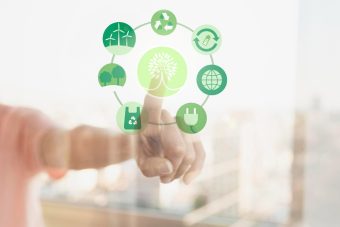The seventh SEE Energy business conference successfully concluded in Novi Sad, with the second day focusing on in-depth discussions by experts on the key topics of energy transition.

The first panel of the day centered on ESG principles in energy transition: Innovations, Challenges, and Opportunities. Participants presented the latest trends and technologies supporting ESG goals, including strategies for reducing companies’ environmental footprints, enhancing corporate social responsibility, and aligning business operations with regulatory requirements. Special emphasis was placed on how ESG principles can attract investments, improve reputation, and boost market competitiveness. Concrete examples from companies like Siemens Energy illustrated the challenges and opportunities ESG principles bring.
The second panel, titled Solar, Nuclear Energy, Green Hydrogen, and Biomass, drew significant attention. Discussions revolved around Serbia’s ambitious plans to generate 70 percent of its electricity from renewable sources by 2040. Panelists expressed concerns that these plans would be difficult to achieve without the integration of nuclear reactors, especially if the country aims to phase out coal. As nuclear energy is often a topic that sparks debate, this panel was no exception. Participants highlighted the issue of the moratorium on nuclear energy in Serbia, which legally prohibits the development or use of nuclear technologies for electricity production. Serbia remains one of the few countries that have decided against utilizing nuclear power, meaning there are no nuclear plants, nor are there plans to build any, despite several neighboring countries having them. Thus, lifting the moratorium would only be one of many necessary steps before developing this energy source.
More:
The third panel, Battery Systems for Sustainable Road Infrastructure, focused on the role of battery systems in storing green energy and fostering the development of electromobility. Since green energy should not “evaporate,” batteries are currently a crucial solution for energy storage. Moreover, ensuring that electricity from chargers does not originate from coal is essential for electric vehicles to fulfill their purpose. The discussion covered the challenges of public infrastructure for EV charging, with a special mention of Charge&GO, which has installed 138 public charging connectors so far. Particularly impressive is the surge in charging sessions reported by Charge&GO, from around 300 in 2021 to tens of thousands this year. This growth not only reflects the increasing use of electric vehicles but also highlights the potential problem of charging station saturation, where chargers might be occupied throughout the day. Such trends place additional pressure on infrastructure, requiring careful planning to avoid long waiting times, on top of existing challenges such as electricity supply and charger connections. The panel emphasized the importance of user education regarding the use of apps and RFID cards, as well as the practical aspects of operating electric vehicles.

The final panel of the SEE Energy conference, titled Batteries and Grid Integration, was opened by Nikola Grubor from MT-KOMEX, shedding light on the future of large battery systems as a critical next step in the evolution of energy. Grubor explained that, similar to how solar technologies have evolved in recent years, battery systems have recently become a key topic, particularly due to new regulations requiring their integration into larger energy projects and economic factors such as electricity purchase prices.
When battery systems are not in operation, solar panels either supply consumers directly with electricity or return energy to the grid. However, problems arise when energy consumption does not align with production, leading to energy waste. The introduction of battery systems enables energy storage, enhancing investment efficiency and preventing energy loss. Grubor noted that integrating battery systems into solar energy projects increases total investment costs by approximately 10 percent, but it provides significant flexibility, allows for additional energy services, and facilitates energy delivery to the grid when it is most needed. With ongoing technological advancements, batteries are becoming more affordable and sophisticated, further highlighting the advantages of their use.
Energy portal

